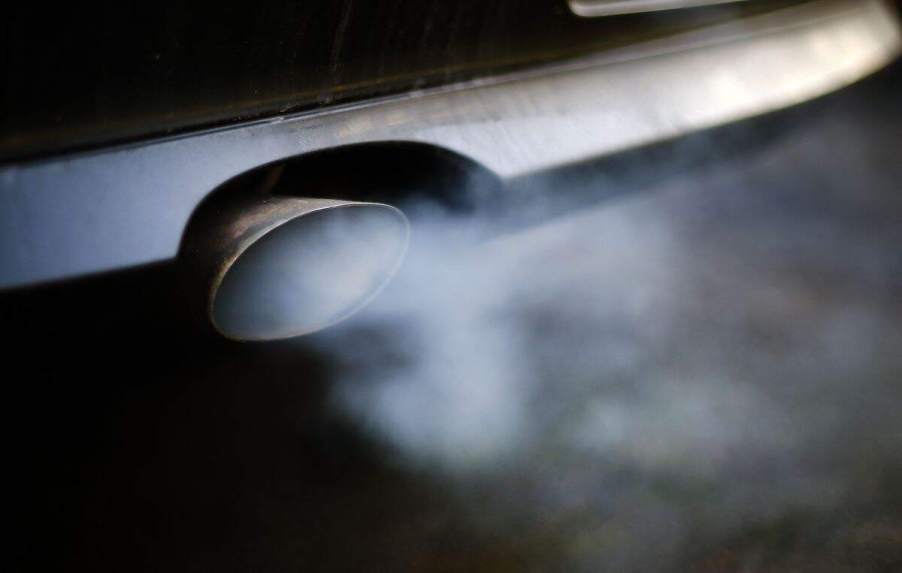
Can You Die of Carbon Monoxide Poisoning in a Car Parked Outside?
Carbon monoxide poisoning is responsible for the deaths of a few hundred people each year in the United States. Typically, you don’t have to worry about deadly car exhaust while driving or idling in open spaces. Still, specific circumstances could lead to carbon monoxide poisoning when letting a car idle outside.
Here’s how carbon monoxide poisoning could kill you in a parked car
Three U.S. Marines recently died in a parked car. A PubMed study blamed their deaths on carbon monoxide poisoning in an outdoor setting. All three had elevated carboxyhemoglobin levels. Carboxyhemoglobin is a compound that forms when carbon monoxide fuses with a person’s red blood cells. It prevents them from supplying oxygen to the body, sometimes causing death in only a few minutes.
Such an event usually happens only when high concentrations of carbon monoxide are built up in an enclosed space. All internal combustion engines emit carbon monoxide. That’s why you should never leave your car idling or heating up in a garage, even if the door is open. EVs are the only exceptions to this rule because they don’t produce emissions.
Though carbon monoxide poisoning is unlikely to occur outdoors, it’s possible if there’s something wrong with the car’s exhaust system. An exhaust leak produces strong fumes inside the vehicle’s cabin. In addition, you’ll probably hear jarring sounds from the engine. You might not notice these noises only if you were sleeping when the problem arose.
Experts interviewed by the AP believe the Marines’ deaths were caused by corrosion, commonly found on older vehicles. Rust holes can allow exhaust fumes to be sucked into the cabin through the intake cavity next to the windshield or through the floor. If the Marines were using the air conditioner set to recirculate, they would have had no outside air to offset the poisoning.
What are the warning signs of carbon monoxide poisoning?
Carbon monoxide has no color or odor, so you probably wouldn’t notice a problem until symptoms occurred. Low levels of exposure are known to cause headaches, nausea or vomiting, dizziness, and general fatigue. Advanced symptoms of carbon monoxide poisoning include blurred vision, shortness of breath, and impaired cognitive function. Severe exposure often causes loss of consciousness or heart irregularities.
If high carbon monoxide levels are isolated to one area of your home, these symptoms might come and go. You might also experience them only when using certain appliances, such as a wood-burning stove. When multiple household members share your symptoms, that’s a clear indication you might have a carbon monoxide problem.
How long does carboxyhemoglobin last in the air?

According to the Department of Engineering at Iowa State, carboxyhemoglobin has a half-life of four hours in fresh air. Without medical intervention, it will take several hours for your body to dissolve that compound completely. If troublesome symptoms are already present, getting oxygen treatment from medical professionals is best. People experiencing medium to severe symptoms might require treatment inside a hyperbaric chamber.
In those cases, organ or brain damage might be unavoidable. Even after a full recovery, the after-effects of severe carbon monoxide poisoning could last for weeks. Affected individuals might also develop a permanent hypersensitivity to carbon monoxide.
Carbon monoxide poisoning is often deadly, but you can take steps to protect yourself. Install a carbon monoxide detector on each level of your home and in your unattached garage. Don’t leave your car idling in a garage for any length of time.
If you must sleep in your car, turn the engine off. Your vehicle might have hidden areas of corrosion that could compromise your safety, even if the vehicle is idling outdoors.


